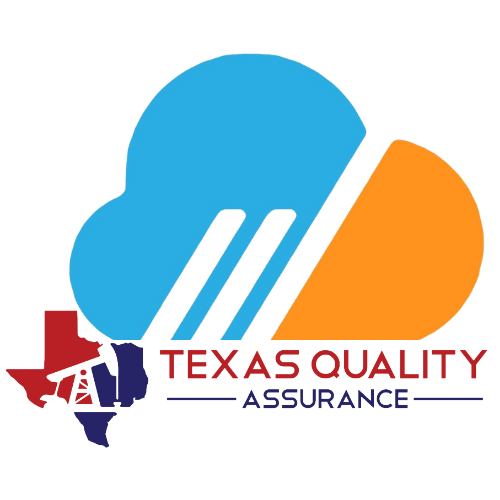I probably need to reread the definition of favorite because everyone of these case studies seems to be my favorite. Anytime a company has an ISO 9001 success story and has the numbers to back it up, I love it!
I especially like this case study on Orkin because they did things wrong and they did it wrong in a big way. But, and it’s a BIG BUT, Orkin evaluated what they were doing and fixed it!!
Review of the ASQ Article
Let’s quickly review this article. Orkin has commercial and residential services. Some branches are residential only, some are commercial only, and some are both. ISO hits the scene and some of their commercial contracts are getting the ISO certification. As you know, with that, their suppliers needed to be ISO certified. Here’s where things go bad…
Orkin decides they have to get these commercial branches their ISO certification. So, they do what any large company would do…they tell their branch managers to handle it. WHAT?!?! It’s hard enough to be a business owner and now I have this thing that feels so big to do? Well, some succeeded. That presented a new problem for Orkin across the nation. As I mentioned before, branches can be residential, commercial or both. Orkin only required the commercial branches to be certified. Orkin has customers that are nationwide businesses. Because of the confusion and inconsistency with which branches were and were not certified, Orkin lost a major nationwide contract. Waaah, waah, waah.
Don’t Give Up
Here’s the great part-they didn’t give up. Here’s where Orkin makes it right. They decide that they have to be consistent and help ALL branches earn the ISO certification. To do this, Orkin created their own Quality Assurance Team. The best part about this team is that they were 7 experienced Orkin professionals that had an average of 30 years experience each with Orkin. I don’t know about you, but I’m more likely to listen to someone that’s walked 30 miles in my shoes than an outside consultant that knows nothing about my business. (I will revisit this because we are, in fact, an outside consulting company and there is value here, too.)
Building a Team is Crucial
Once the team was in place, they wrote a manual with clear, consistent expectations and began auditing their branches. As you can imagine, branch managers aren’t happy. It’s either one more thing or it’s a branch that already did it on their own. Or, the branch is successful without these rules-there’s always reasons people don’t want to change. However, Orkin had this super star team that was able to build trust and respect. Working together and alongside the branch managers, the team was able to help Orkin receive ISO certification nationwide. Amazing!
Now, for the numbers. Taking the burden off the branch managers and placing it on a QA team saved the company $125,000 a year! Wow! Think about that-they had to hire 7 individuals-or at least raise their salary and pay for their travel, yet they were able to SAVE $125,000. Over a 5 year period, Orkin’s customer cancellation rate dropped a quarter of a percent. That doesn’t sound like much to me, but it’s a nationwide company. That quarter of a percent amounts to $660,000 a year for Orkin. So, we’re talking almost a million dollars saved because of ISO certification.
Inspect what you Expect – Auditing is a Must
One of the best parts of having this internal Quality Assurance team and internal audits was that the team was able to offer post audit solutions. The team didn’t just come in and find non-conformities, they offered solutions. The other best thing about this team is that they themselves got audited every year. I love this-it gives the branch managers another reason to trust their team even more. Great job, Orkin!
Before I close, I want to discuss the difference between having your own internal quality team vs. an external auditor/consultant. As Kyle mentioned on this episode, most companies in the USA are under 200 employees. Orkin is much larger than that. Their team had objectivity when auditing each branch because they didn’t know the people they were auditing and they weren’t around when the branch specific policies were put in place. The team was able to objectively audit AND offer valuable feedback since they weren’t familiar with the branch. If you are under 200 employees, your quality guy wrote the manual and sees what is happening every day. We tend to turn a blind eye when our hand helped create. This quality manager will ignore non-conformities or simply skip over them because he’s just trying to get the audit done-telling himself, “Yea, we do that, yea, we do that, yea, we do that.” An external consultant that is still considered an internal auditor can come in, evaluate your manual and your procedures, determine if your company is actually following the procedures you have in place, and offer solutions to make things easier. An external consultant is a guy that’s on your side, learns your business, and offers solutions. He is not the “gotcha” guy.
I’ve said it before and I’ll say it again, can you afford to not get certified? Your numbers may not be as high as Orkin’s, but they will be significant.
Texas Quality Assurance: www.TexasQA.com | Tel: (281)756-7316
LinkedIn | Facebook | Instagram | Twitter | GETTR | YouTube
– Products and Services: | QMS Software | Consultation | FQM | Auditing
#QualityMatters podcast is streaming on:
iTunes | Spotify | Google | Audible | Stitcher | TuneIn
